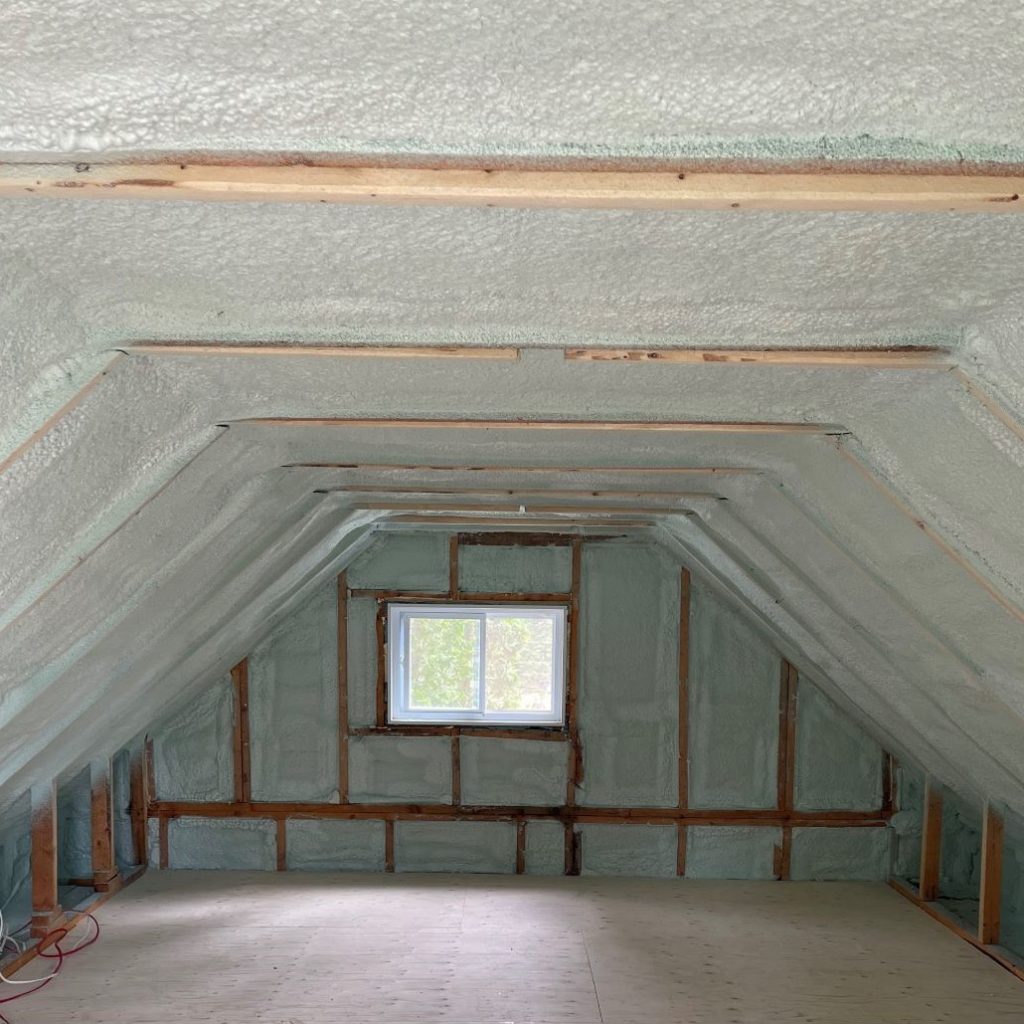It is well known that effective insulation provides a barrier against winter cold and moisture. But did you know that a well-insulated home also offers superior summer comfort?
Indeed, during summer heat waves, a high-performance building envelope achieves:
- Keep heat outside
- Maintain a cool and pleasant room temperature
- Minimize your air conditioning costs
STEP 1: MAKE YOUR OWN DIAGNOSIS.
In this case, there is no need to involve an expert, since the first diagnosis is easy to establish.
In the summer, is it as hot inside as it is outside of your home, like leaving a door open all day? Do you feel a sensation of discomfort due to the suffocating atmosphere and the accumulation of heat?
If so, it’s a safe bet that your neighbours are struggling with the same problems (since the houses in the same neighbourhood are often very similar). Ask them: how much are their annual heating and cooling costs? If their costs are lower, have they improved their insulation?
STEP 2: FOR UPCOMING RENOVATIONS, THINK INSULATION.
If you plan to renovate your home during the summer, consider correcting the insulation at this moment. Repairing the roof, refurbishing the exterior cladding, installing new windows as well as restructuring the interior divisions (in the case of a duplex or a triplex, for example) give you prime access to the building envelope. Take this opportunity to:
-Examine weaknesses in insulation
-Look for the presence of holes (plumbing vents, passage of electrical wires, etc.)
-Check the effectiveness of the vapour barrier
***
Isolation Majeau has been specializing in basement insulation for 25 years
Visit the following pages to learn more about the services covered in this article:
-Roof and attic insulation
-Insulating the walls of the house
-Urethane insulation: Type 2 sprayed polyurethane
STEP 3: PREFER INSULATING MATERIALS THAT HAVE OPTIMAL PROPERTIES.
Depending on the renovation work you want to start, you may access the building envelope from the inside, the outside or even through the attic.
REFURBISHMENT OF EXTERIOR CLADDING AND/OR INSTALLATION OF NEW WINDOWS
Correct the insulation from the outside, which makes it possible to block all the openings and to cover the thermal bridges. Application of 1.5 inches of Type II sprayed urethane (R-6 per inch), which acts as a vapour barrier and adds R-9 value to your wrap, in addition to providing perfect adhesion and joints. Thanks to its air and vapour barrier properties, urethane allows you to enjoy a comfortable atmosphere all year-round.
REFURBISHING THE ROOF
It gives you a privileged access to attic insulation. Seal penetrations (plumbing vents, electrical wires, etc.) with the ceiling using canned urethane, then blow in cellulose fibre to complete the attic insulation, for a total insulating value of R -41. When adding blown cellulose, installers will position blockers so as not to obstruct the soffits.
Important: Make sure that the soffits (air intakes) and the static fan have the capacity to adequately ventilate your attic. These make it possible to ventilate/cool the roof and to evacuate the excess heat and humidity coming from the interior. This also prevents overheating of the roof shingles and their premature wear.

RESTRUCTURING OF EXTERIOR WALLS (DUPLEX OR TRIPLEX)
It gives you access to the insulating envelope via the interior walls (mounted in 2 by 4 in the case of a construction dating from the 1920s, 1930s or 1940s). Add 3 inches of sprayed urethane for a perfect seal (air barrier / vapour barrier) and for an insulating value of R-18.
SOUNDPROOFING
During major renovations (duplex or triplex), it’s wise to inject cellulose to the floors in order to reduce the transmission of airborne noise. It’s a simple, effective and economical solution.
Good news! Rénoclimat and Novoclimat government grants will allow you to improve the thermal insulation of your home at a lower cost this summer!
TIPS FOR A COOL HOME
Beyond work aimed at correcting insulation weaknesses, there are very simple ways to enjoy a comfortable atmosphere during summer heat waves.
-Open the windows at night to evacuate the heat and ventilate as much as possible, then close them during the day when heat is at its highest.
-Keep curtains closed to block direct sunlight.
-Use long-bladed, energy-efficient and efficient ceiling fans to cool a room in summer.
If you want to talk directly about your situation with a residential insulation expert, contact us now at 1 888 962-5328!
This article was originally published on May 23, 2017 by Jocelyn St-Pierre








